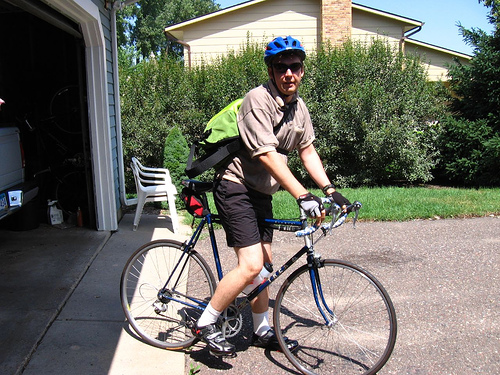
by David Dack
For most people, running is the first thing that comes into mind when thinking about getting healthy and enjoying superior fitness. There is a reason for that. Running is one of the best training regimens that can help you get into the best shape of your life without paying for high gym fees or costly equipment. In fact, all you need is a couple of decent sneakers and off you go.
Nonetheless, running has its shortcomings. The high impact nature of this sport can lead to a myriad of injuries and health problems. This is especially true if you’re really overweight or haven’t done much exercise in the late years.
Therefore, if you want to start running without risking injury or burn-out, here are 3 guidelines that can help.
Start by Walking
One of the deadly mistakes beginners make is trying to run too much too soon, without building first the needed cardiovascular power and endurance level. Opting for this approach will only lead to injury, extreme fatigue and a painful burnout.
As a matter of fact, if you are a new comer to the sport, you may not be able to sustain the activity for long. The strain on your body and the pain will be just too much to handle.
Therefore, as a beginner, you should start off slowly and build the intensity up gradually. The way to go about that is to start by walking first, leave the running for later.
For that, go for 4-5 hour long walks and see where your fitness level is at. If you feel confident enough, you can add short running intervals (no more than 30-45 seconds of running) into your routine.
And as you get fitter, add more and more running and less walking until you can run for at least 30 minutes without much huffing and puffing.
Work On your Running Form
The proper running form is the key to injury free running. Many beginners overlook the importance of good running mechanics and presuppose that only elite runners should worry about cultivating good running form. That’s wrong. Any runner, recreational or elite, should work diligently on enhancing their running form. Otherwise, expect overuse injuries very soon.
Therefore, on your next run, make sure to do the following:
- Never land on the heel, instead you should land on your mid-foot.
- Keep your body relaxed all time. If you feel any tension building up, slow down and release the tension by berating into it.
- Keep your arm bent at 90°, your back straight, and slightly lean forward.
- Keep your breathing under control by running with a conversational pace.
Mastering these simple basics requires time and practice. It cannot be done overnight. One thing you can do to speed up the learning process is to choose one area—usually your weakest one—and start gradually improving it on it. If you try to make a big form change within a short time span, you’ll find it harder to keep up for long without frustrating yourself every step of the process.
Check Your Heart
Overtraining is a runner’s nightmare. No doubts. Fortunately, you can prevent it by just regularly assessing your heart rate. For instance, after a regular checkup ( preferably in the early morning), you found out that your heart rate is higher—6 to 12 beats per minute—than usual, then you may be overdoing the exercise and increasing the likelihood of overtraining.
There is no need to panic in that case. You may just need to cut back on your running training or to take a couple days off. Listen to how your body (your cardiovascular system) is responding to the training load and adjust to it. When your heart rate is down to its usual, then you can resume the training without much worry.
On the other hand, any drop in your regular heart rate should be embraced and welcomed. In fact, that’s a clear sign that you’re heading into the right direction and actually making progress. See, as you get fitter, your heart gets stronger and more efficient at pumping blood throughout your body and working muscle, and thus it’ll need fewer beats per minute to do the same effort.
Here you have it. The above training guidelines can help you start running without hurting yourself. Nonetheless, knowledge is just potential power. You need to put into practice what you’ve just learned. Otherwise, this will be just another useless piece of information. Therefore, take action now and remember to always stay within your current skill level.
(David DACK is a runner and an established author on weight loss, motivation and fitness. For more free tips from David DACK, please visit his website where you can grab this special “Weight Loss By Running” FREE report for a limited time.)






Excellent post! May I add one small tip? When purchasing your first pair of running shoes it is advisable to go to a specialist running store to have a gait analysis to find the perfect shoe for your foot type. Staff at the running shops are very knowledgable and will kit you out in the correct shoe. Poor fitting shoes can be the cause of pain and injury which can be very off putting for a beginner.